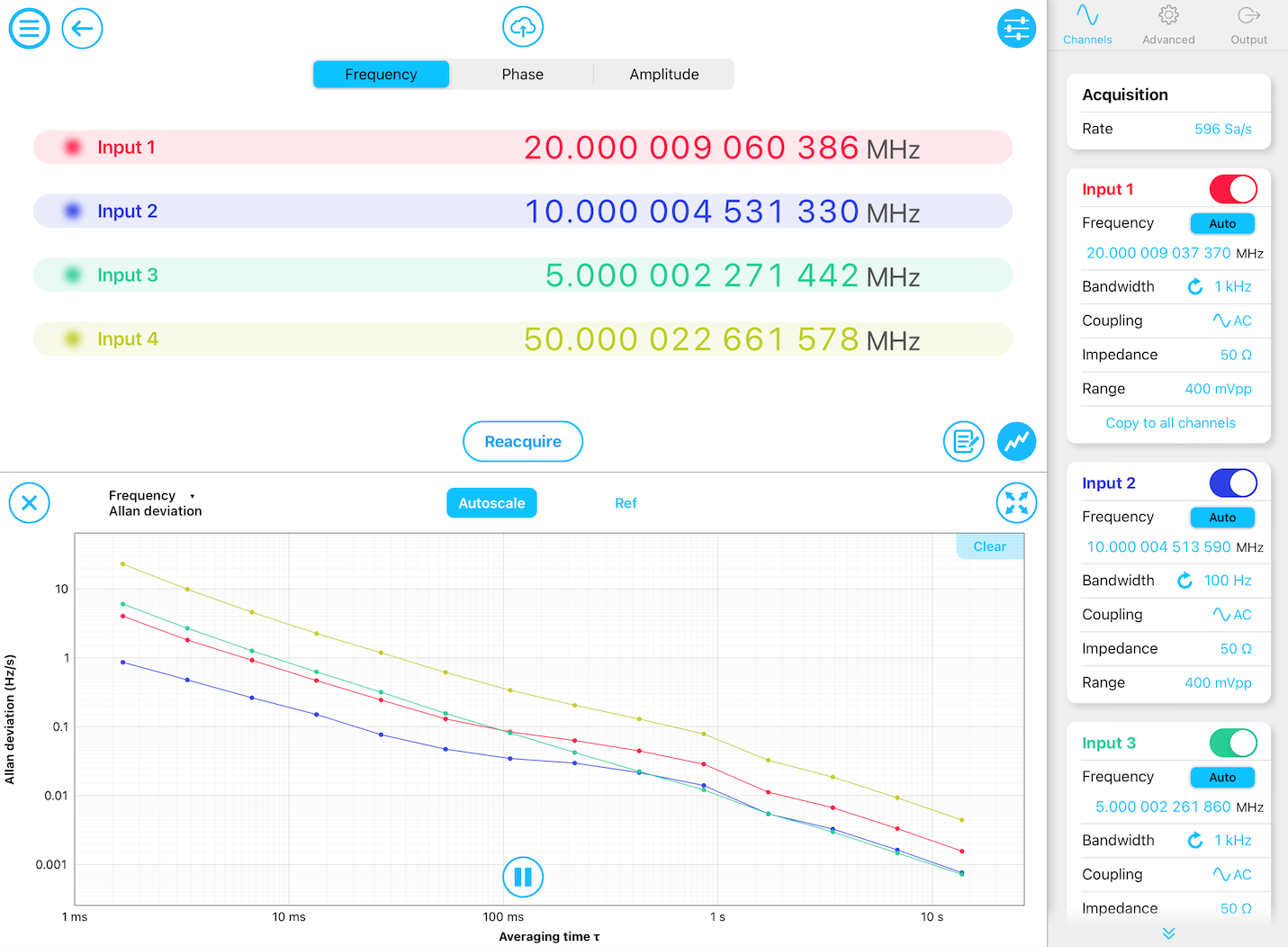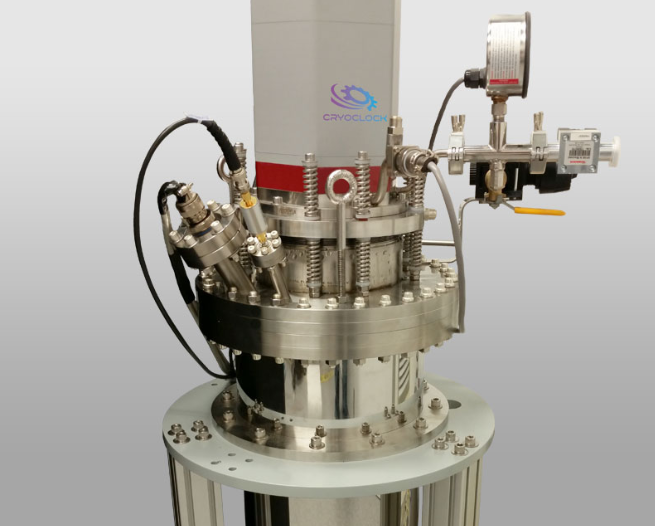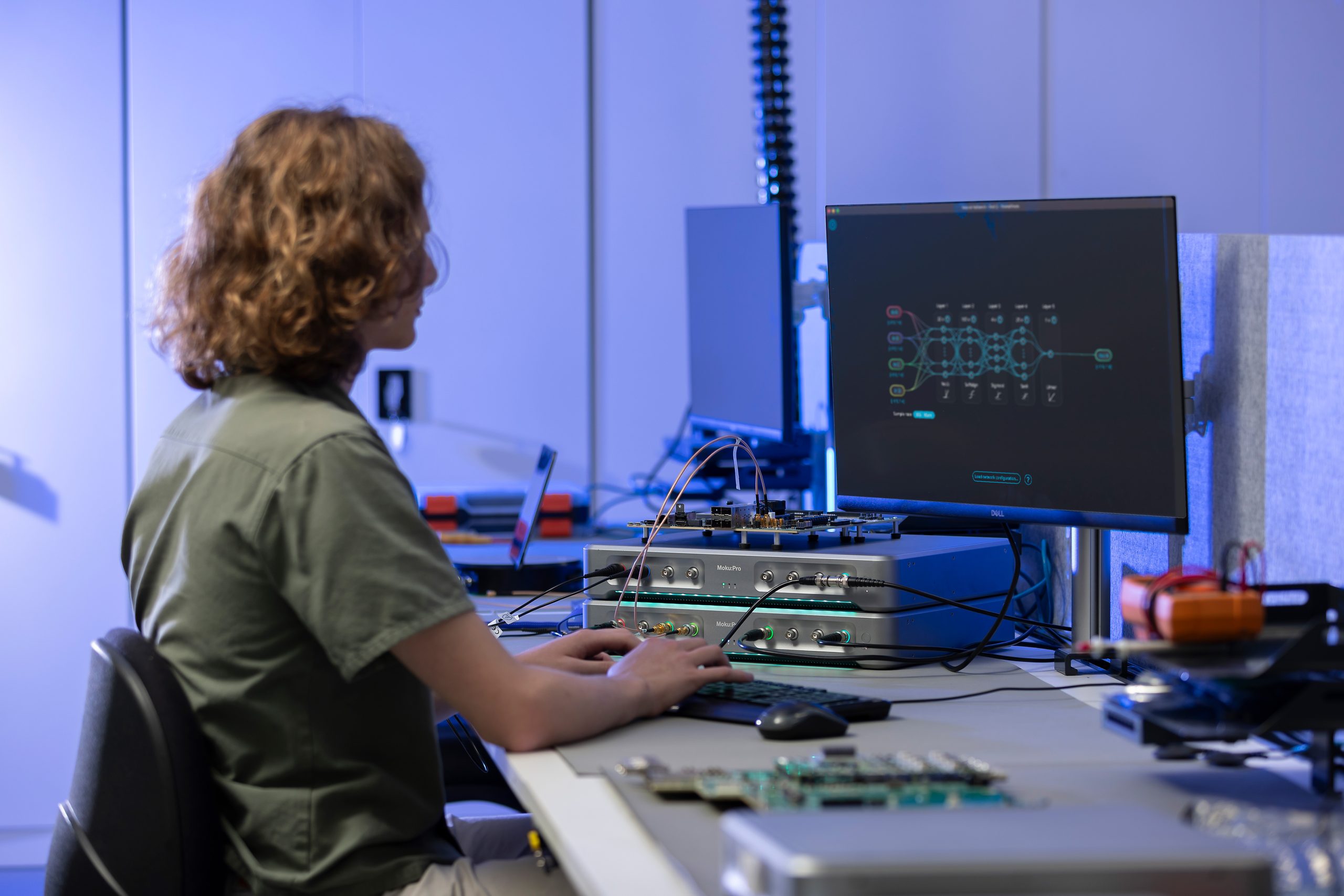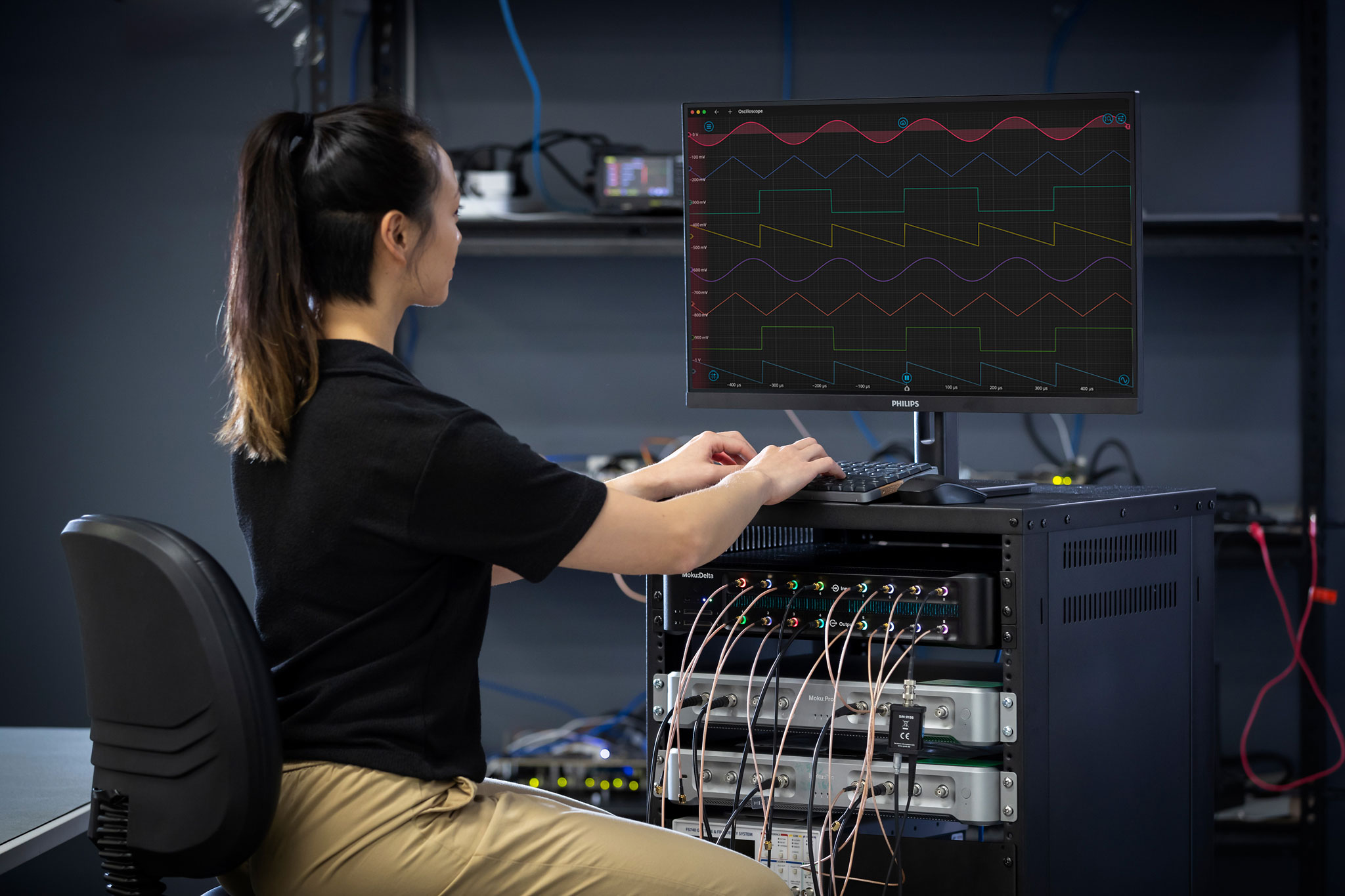This recap and Q+A complements our webinar, entitled Measuring time: Quantifying modern clocks and oscillators, which we co-hosted with Optica on August 13, 2024. If you weren’t able to attend live, you can register now for on-demand access.
In addition to a webinar summary, we’re providing in-depth answers to select audience questions below.
Webinar recap
Professor Andre Luiten, chair of experimental physics at the University of Adelaide and managing director of QuantX Labs, joined Liquid Instruments for an in-depth exploration of clocks and oscillators. He covered the history of such devices, the most important metrics to measure, and the types of noise that may affect clock performance. We demonstrated how to perform important oscillator characterization tests, using the Moku Phasemeter for Allan deviation measurements, the Spectrum Analyzer for a linewidth estimation, and the Lock-in Amplifier to control and stabilize a voltage-controlled oscillator (VCO).
Audience questions
You mentioned that clocks are “anti-sensors.” One obvious exception is geodesy. Do you see that application becoming commercial sometime in the future?
Andre described clocks as “anti-sensors” since they are devices that ideally do not change their output in any way in response to the environment, unlike a good sensor. An exception to this is geodesy, in which scientists measure the distance from the center of the earth using incredibly accurate clocks. General relativity tells us that time depends on the local gravitational potential. If we can measure the frequency of a clock, it should be able to tell us about the local gravitational potential of the clock. A fascinating development in this area is that clocks are now entering a regime in which millimeter-level changes in the distance from the center of the earth has a measurable impact on the clock frequency. An example of measuring Earth’s gravity field is shown in Figure 1.
However, understanding the local gravitational potential is already becoming a limiting factor in how well we can characterize the clock. To successfully make these measurements, you must compare the clock under test to other clocks at known geopotentials, which will be a challenge in bringing this application to market.

Figure 1: Visual gravity model created from NASA’s Gravity Recovery and Climate Experiment (GRACE). Red areas show where gravity is relatively stronger than the standard value, and blue areas are where gravity is weaker. You can see an animation here.
You described frequency and phase fluctuations as if they were different, while, of course, either could be expressed in terms of the other. Is there a “philosophical” difference in using these two ways to describe this kind of noise?
The short answer is no, there is no philosophical difference in using frequency or phase terms to describe this type of noise — they are mathematically connected in a one-to-one way. If you are trying to make a connection between the fluctuations of an oscillator and some environmental effect, there may be a natural basis in which to work. For example, if a clock has a known temperature sensitivity where the frequency changes based on the temperature in the room, it may be easier to express changes in the frequency domain rather than as a change in phase.
How does deadtime relate to the Dick effect?
The Dick effect is something that affects modern atomic clocks. When working with atomic clocks, you must laser-cool atoms, trap them, and then effectively probe them. The challenge with this arises from deadtime. The clock transition is continuously driven by an oscillator, however the atomic population is only periodically interrogated and there is deadtime between probe signals. Because of the periodicity of this comparison and deadtime, this gives rise to noise that is difficult to differentiate from the signals that you are trying to correct. This noise has been termed the Dick effect — this is analogous to the circumstances in which we have deadtime when measuring with a frequency counter. In the end, a frequency counter simply compares two different frequencies. If there are gaps in that comparison and fluctuations in the input signal, the presence of those gaps will give rise to false signals.
I assume that your time measurements are only as good as your reference clock. How can you tell if your reference or signal clock performance is sufficient if you don’t know from a datasheet or similar?
This is correct; if your reference clock does not far exceed the performance and stability of your clock under test, it will obscure the performance of your oscillator. If you don’t have a datasheet or specifications available and do not have a more stable reference clock to refer to, there is no way to determine the performance. This provides a challenge in measuring the performance of the most stable clocks in the world — if you build a clock that is more stable than any reference clock available, the best you can do is build a second, identical clock to compare it with.
Moku:Pro has an onboard clock that is stable up to 300 ppb. Users can also use the external 10 MHz reference input when using instruments like the Phasemeter to characterize oscillators.

Figure 2: The Moku Phasemeter tracking four independent input signals and graphing the Allan deviation of each signal.
Could you say more about what is inside QuantX Labs’ Cryoclock device? Is this a sapphire oscillator?
Cryoclock is a cryogenic sapphire oscillator from QuantX Labs, shown in Figure 3. It consists of a large, fist-sized lump of sapphire, cooled down to 6 K. Researchers then excite an electromagnetic mode inside. In this state, sapphire can propagate microwaves over extraordinarily long distances or times. Sapphire inherently has very little loss, leading to excellent short-term stability. It is also a very rigid material, making it immune to many mechanical fluctuations. Sapphire also has a state where it becomes temperature insensitive, leading to very good long-term stability in addition to the inherent high short-term stability. You can learn more about it here.

Figure 3: The Cryoclock cryogenic sapphire oscillator from QuantX Labs.
How does the instrument clock noise limit a phase noise measurement?
The internal clock of a measurement instrument can impact phase noise measurements, since every clock will generate its own phase noise. This is an issue only if the device under test’s phase noise is close to or lower than the instrument’s innate phase noise. To mitigate the impact of instrument clock noise, try implementing techniques like cross-correlation.
Thank you for viewing our webinar. We look forward to seeing you again.
For more insightful demonstrations, check out our webinar library for on-demand viewing.
More questions?
Get answers to FAQs in our Knowledge Base
If you have a question about a device feature or instrument function, check out our extensive Knowledge Base to find the answers you’re looking for. You can also quickly see popular articles and refine your search by product or topic.
Join our User Forum to stay connected
Want to request a new feature? Have a support tip to share? From use case examples to new feature announcements and more, the User Forum is your one-stop shop for product updates, as well as connection to Liquid Instruments and our global user community.






